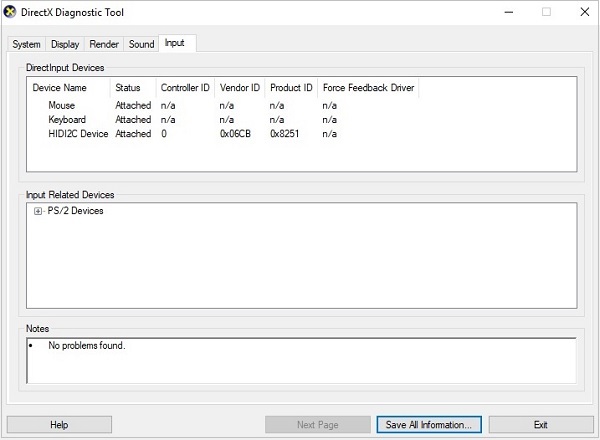
- DirectX - Home
- 3D MATHS
- 3D Maths - Vector Algebra
- 3D Maths - Matrix Algebra
- 3D Maths - Transformations
- 3D Maths - DirectX Math
- DIRECTX
- DirectX - Overview
- DirectX - Installation
- DirectX - Components
- DirectX - Tools
- DirectX - Creating App
- DirectX - Window Events
- DirectX - App Lifecycle
- DirectX - Direct3D Initialization
- DirectX - First HLSL
- DirectX - Graphics Pipeline
- DirectX - Buffers
- DirectX - 3D Transformation
- DirectX - Drawing
- DirectX - Rendering
- DirectX - Modeling
- DirectX - Lighting
- DirectX - Texturing
- DirectX - Multi Texturing
- DirectX - Blending
- DirectX - Picking
- DirectX - Stenciling
- DirectX - First Shader
- DirectX - Pixel Shader
- DirectX - Geometry Shaders
- DirectX - Compute Shaders
- DirectX - Shader Effects
- DirectX - Quaternion
- DirectX Resources
- DirectX - Quick Guide
- DirectX - Useful Resources
- DirectX - Discussion
DirectX - Tools
This chapter will focus on various tools which are being used for graphics. Basically, it comprises tools and utilities which are needed for DirectX.
A list of primary tools which are used in DirectX is mentioned below −
- Debugging DirectX apps
- Effect-Compiler Tool
- DxDiag ("DirectX Diagnostic Tool")
Debugging DirectX apps
We need editor to use debugging app. The user can use Visual Studio and the Windows 8 SDK to debug DirectX apps remotely. The Windows 8 SDK includes a set of components that support DirectX development and provide error checking with parameter. These components are .dll files like D3D11_1SDKLayers.dll, D2D1Debug1.dll, and Dxgidebug.dll.
Effect-Compiler Tool
FXC (fxc.exe) is an executable offline tool for compiling HLSL shaders for all the respective versions of Direct3D. The tool is located in the below link −
(SDK root)\Utilities\Bin\x86\
DxDiag ("DirectX Diagnostic Tool ")
DirectX includes a secret tool that is designed to troubleshoot problems basically for users who want to debug and analyze each and every step. The tool is called DirectX which helps us in identifying problems that are related to audio, display, video and any other multimedia applications with required features running on our computer.
This tool includes a special feature to find problems that occur with audio and video players of Windows 10 Operating system.
You can access this tool using Run prompt of Windows operating system as mentioned below −
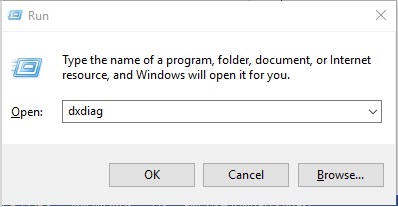
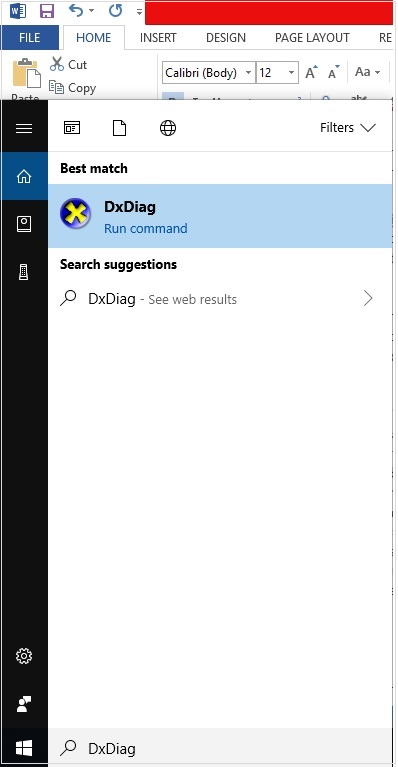
In this chapter, we will be focusing on the usage of DirectX Diagnostic tool with respect to multimedia and graphics.
A simple search about the DirectX Diagnostic tool in Google search engine in case your personal computer is connected to the Internet will define the result as mentioned below −
Microsoft DirectX is a collection of Application Programming Interfaces (APIs) for handling tasks related to multimedia, especially game programming and video on Microsoft platforms.
Once we look for this tool in our system, we get information divided into following sections −
System Information
The system information is shown in the below screenshot −
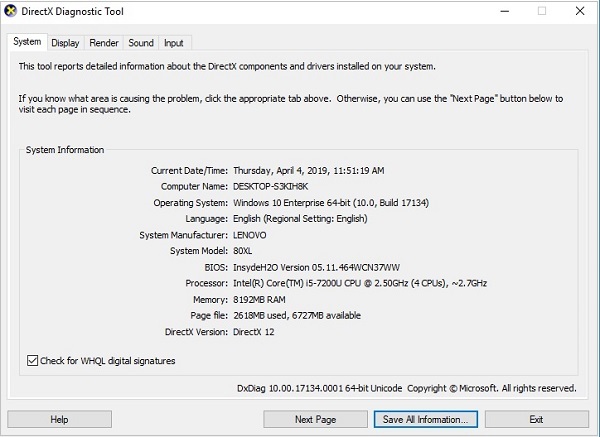
Display Information
The display information can be seen in the below screenshot −
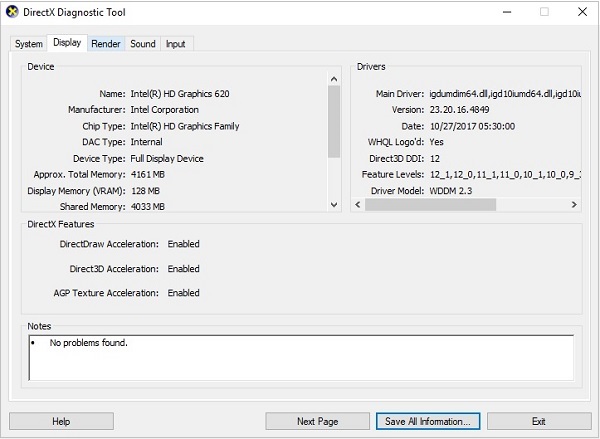
Render Data
The below screenshot shows the Render Data in the DirectX Diagnostic Tool −
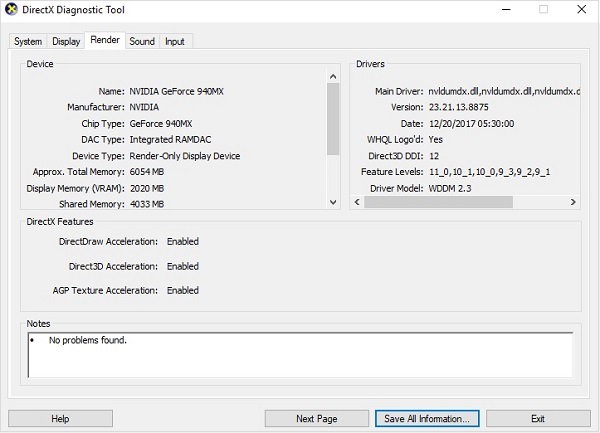
Sound Details
The sound details are shown in the below screenshot −
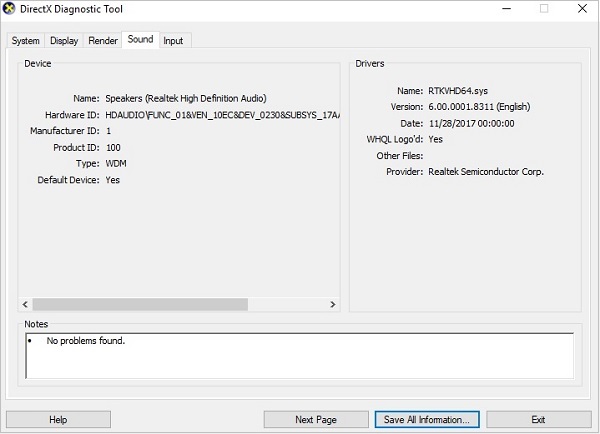
Input Details
The input details are shown in the below screenshot −
